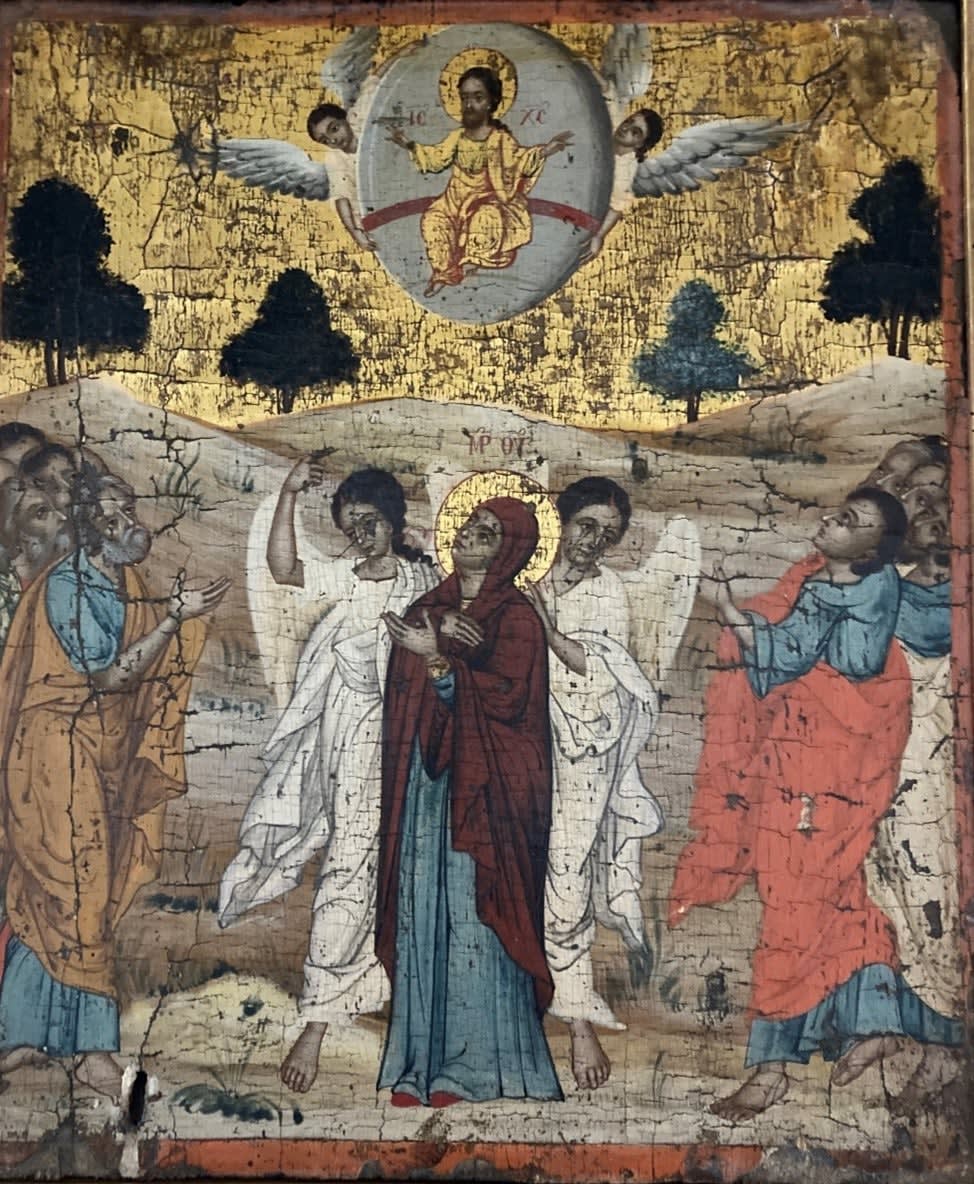The Ascension, 18th century
Inscription in Greek: Identify figures. ΜΡ ΘΥ, Mother of God IC XC, Jesus Christ.
Feast Day: Moveable feast, 39 days after Easter
The feast, falling on the fortieth day after Easter, celebrates Christ’s ascent into Heaven and is described in Luke’s Gospel (24:50-53) and in Acts (1:9-12).
The composition derives from the pre-Christian imagery of an emperor’s apotheosis whereby the deified emperor was shown on a shield carried up by eagles into the realm of the gods.
In the icons, Christ is shown ascending in a glory or aureole born up by angels. He is seated and blesses with his right hand in the traditional gesture with two fingers raised. Below, standing on the Earth, are the Mother of God attended by two angels with groups of apostles on either side. Behind are stylised trees and rocky mountains.
The feast, dating from very early Christian times, originated in Antioch around 380 AD. The present form of the imagery dates from the 6th century and was in general use throughout Christian churches by the 9th century since when it has scarcely changed.

